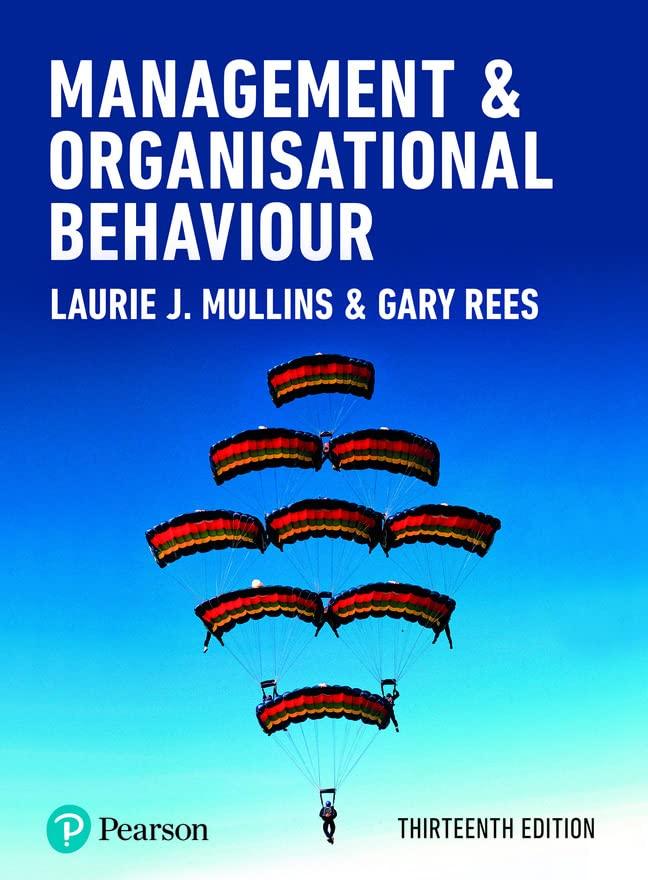This case study looks at the experience of Wiltshire Fire & Rescue Service (WFRS), an organisation that
Question:
This case study looks at the experience of Wiltshire Fire & Rescue Service (WFRS), an organisation that faced a number of challenges in responding to considerable cultural and organisational changes. Having successfully worked with ACAS before, WFRS decided to use training provided by ACAS to enable the service to maintain and improve their productivity through this period of significant change.1 Where are they now?
Wiltshire Fire & Rescue Service employs approximately 650 full-time and retained fire fighters and support staff in 24 local fire stations with its head office based in Devizes. Despite some restructures that have taken place over the years, staff turnover remains low, with a high proportion of employees having only worked at the Service. Most full-time firefighting staff in the organisation are represented by the Fire Brigades Union, with other staff represented by UNISON and the Retained Fire Firefighters’ Union.
In April 2016 the Service combined with Dorset Fire & Rescue Service. Over the last year or so the Service has reviewed and updated the way it carries out important personnel activities, such as managing performance and conflict, as well as addressing more underlying behavioural issues. The ‘combination’ project between Wiltshire and Dorset Fire Services provides a real opportunity to further reflect on how they can improve the way they work, but has also been the cause of uncertainty among staff about job security and terms and conditions of employment.
What challenges do Wiltshire Fire & Rescue Service face?
The culture of the Service is, in some ways, its greatest strength, but it can also raise challenges. Emotional and community bonds are often very strong and tight knit, but so are traditional views about obeying procedures to the letter. The day-to-day duties of the fire service have changed markedly over the last few years –
with much more emphasis on prevention than responding to fires and other emergencies. The way the organisation sees itself, and the way it is perceived, has led to the need for some intense periods of reflective learning. The Service is having to adapt to the following challenges:
Public perception: fire staff are stereotypically seen as jumping down poles and pouring water on fires.
In reality, they are more likely to be seen in schools educating young people, advising builders on safety regulations or helping others, particularly the vulnerable in the community, to identify fire risks.
Different working patterns: the decreasing need for ‘firefighters’ to put out fires has meant that fewer staff are needed at stations. Many firefighters are ‘retained’ which means they can be on call and used only when needed. This has led to the adoption of different pay structures and working patterns.
Coming out of the shadow of the past: the original ‘Fire Services Disciplinary Regulation’ that was in operation until the early 2000s, reflected a hierarchical organisation with very prescriptive procedures.
For example, if someone appealed against a case of gross misconduct the appeal process could go all the way to the Home Secretary.
Facing up to behavioural issues: the firefighter mindset is based upon the precept of ‘you will’ and many staff have difficulty dealing with grey areas where colleagues are not fully conforming to accepted standards of behaviour or conduct.
Questions
1. What do you see as the importance of reflective learning to improving organisational performance and effectiveness? How good is your skill of reflective learning?
2. How does this case study help to remind you of subjects you have read in previous chapters of the book?
3. Explain fully the overriding significance of workplace culture to organisational performance and effectiveness.
Step by Step Answer:

Management And Organisational Behaviour
ISBN: 9781292422381
13th Edition
Authors: Laurie Mullins, Gary Rees





